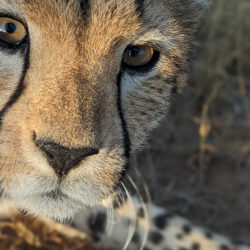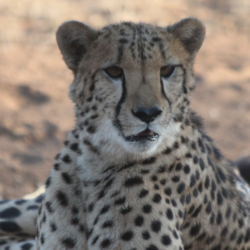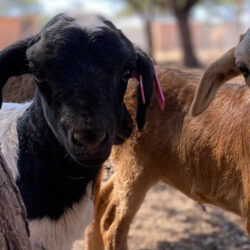Working with Namibian farmers to test possible mitigation methods for Human-Wildlife conflict
-
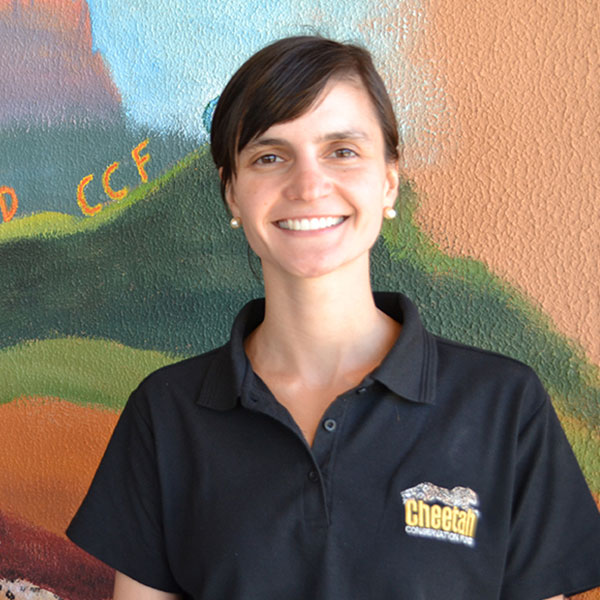
- by Carolina Torres March 12, 2019

CCF deployed Foxlights this past December in the Okakarara District Communal Conservancies!
The Foxlight (Figure 1) is a predator deterrent with a computerised flashing light. It gives the impression of someone patrolling during hours of darkness and therefore, it helps preventing livestock losses at night inside the kraal. Similar techniques have been used against lions in Kenya, jaguars and pumas in South America and black-backed jackals in South Africa. Here, we deployed Foxlights to ten farmers in two of the Okakarara District Communal Conservancies (Otjituuo and Okamatapati), Namibia (Figure 4). This area is communal land dominated by livestock farming. Farmers suffer severe livestock losses to predators both inside and outside of their kraals. CCF is working alongside farmers to find solutions for this ongoing human-wildlife conflict. The specific aim of this project is to determine whether Foxlights are an effective method to prevent livestock losses inside the kraal, and be a potential solution to reduce human-wildlife conflict in these conservancies.
CCF ecologists Willem Briers-Louw and Stijn Verschueren deployed four lights per farmer (Figure 2 seen in post banner above, Figure 3) – i.e. four lights on each side of the kraal, in order to ensure coverage from all sides. Earlier findings in Kenya showed that lions still attack kraals that are partially illuminated from the side without lights. Foxlights were deployed only in kraals with small-stock. In the case where farmers kept sheep and goats in separate kraals, Foxlights were deployed on the kraal where livestock were killed inside the kraal. Questionnaires were conducted to evaluate the livestock management practices and to take note of predator problems and livestock losses before the Foxlights deployment.
Follow-up questionnaires will be done by telephone every four months to check if there were any more livestock losses inside the kraal at night, after the installation of the Foxlights, and to make sure that the lights are still operational. After one year we will do a final questionnaire and evaluate the effectiveness of the Foxlights in the Okakarara District Communal Conservancies. If the lights show to be an effective measure in reducing livestock losses and there is a growing interest from local people, we can then look at scaling-up the project.

Human-wildlife conflict is one of the main threats to cheetahs and many other carnivore species. CCF understands the value and importance of working with farmers to ensure their survival. Conservation of these species lies on the success of guaranteeing that people can live alongside these animals. CCF hopes that the Foxlights will prove to be an effective measure as it will help us get one step closer to ensure coexistence of people and wildlife – both helping them protect and take care of their livestock, while allowing wildlife to thrive as well.
Acknowledgements: Funding was provided by AGA Aktionsgemeinshaft Artenshutz and twenty lights were donated by Ian Whalan, inventor of Foxlights
From the deployment questionnaires CCF got information on the main predators affecting these farmers and what type of livestock they are mostly losing . In total, between the 9 farmers they have lost 121 animals during 2018. The main livestock that farmers are losing is sheep – adults 31% (n=38), lambs 24% (n=29), followed by goats – adults 21% (n=25), kids 9% (n=11), and calves 15% (n=18).
The main predators affecting these farmers are wild dogs (Lycaon pictus), responsible for 45% of their losses, followed by blacked-back jackals (Canis mesomelas) responsible for 36% of the overall losses (Figure 10). Jackals have a preference for smallstock (goats and sheep), while wild dogs have a preference for calves and sheep.
Larger cats like leopard (Panthera pardus) and cheetah (Acynonyx jubatus), seem to be less of a problem in general (with only 3% and 1% respectively). Additionally, there is 8% of the losses were farmers reported to have lost livestock to either domestic dogs or an unknown predator.
According to the time farmers reported their losses it seems that predators will be more likely to shift their prey preference to livestock once the resources become scarcer during the cold and hot dry seasons (Figure 11).
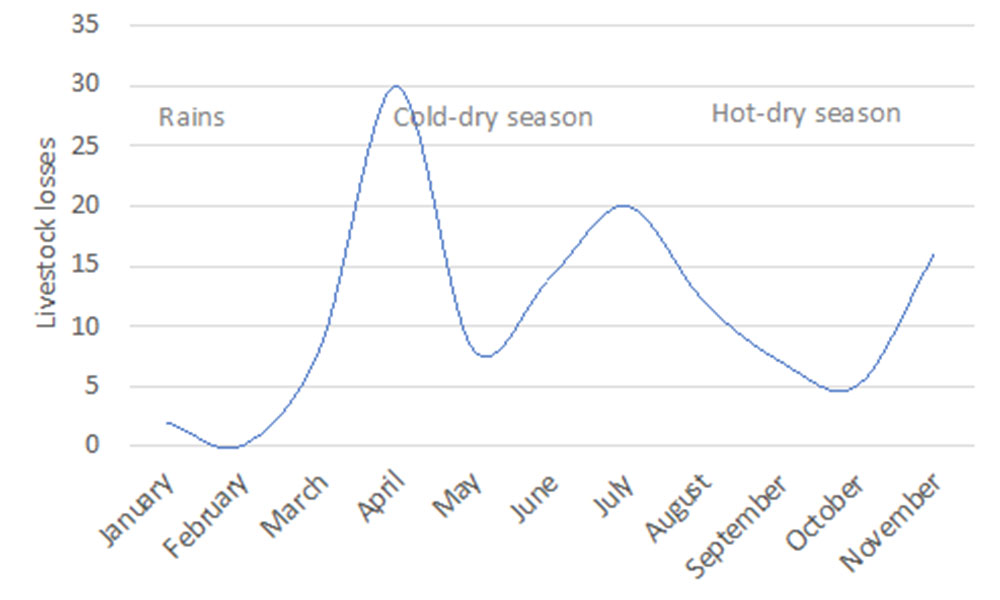
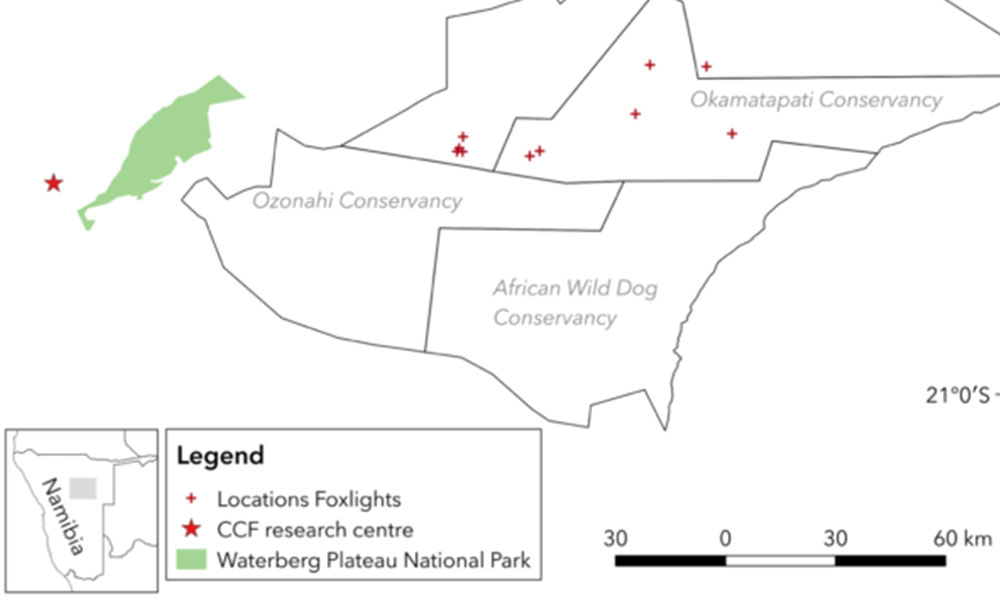
Related Reading
-
March 8, 2024
Make a Positive Impact Toward Species Conservation -
November 28, 2023
Everything you need to know about the #BigGiveChristmasChallenge -
May 24, 2023
Lambing Season and Responsible Farming

